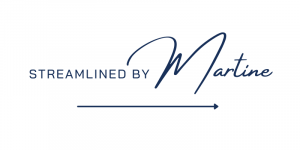
Getting Ghosted After a Client Inquiry? Here's What You’re Missing
Turn ‘Interested’ Inquiries into ‘Booked’ Clients
You finally started getting inquiries from people you’d actually like to work with. You open up that shiny new form submission, skim through their answers, and think: Yes. This person gets it. This could be a perfect fit.
And then?
Nothing. No reply. No booking. No polite “thanks, but no thanks.” Just silence. Cue the overthinking:
- Did I respond too fast? Or not fast enough?
- Should I have sent my pricing later or earlier?
- Is my whole business model a disaster?
Before you talk yourself into scrapping everything, let’s get real: some leads will ghost, no matter what. And it’s not you problem—it’s a “found a better fit / looked at my finances / want to DIY / went on vacation…” situation.
But if ghosting is happening a lot?
If leads keep falling off the map before they book, and you’re left wondering what went wrong, it’s time to look at your inquiry workflow.
As a client experience strategist, I see most people obsess over the back end of their workflow: the onboarding phase, the feedback phase, the “how do I get them to fill out the testimonial” phase. But you know what gets overlooked?
The part where a new lead is curious about becoming a client…but hasn’t booked yet.
In this post, I’ll walk you through why your leads might be ghosting, what a clear and client-friendly inquiry process looks like, and a few simple fixes to help more of the right people move forward.
4 Reasons Why Your Client Inquiry Workflow Isn’t Working
Why Your CRM Alone Isn’t A Client Experience Strategy…Sorry, Dubsado
CRMs like Dubsado and Honeybook are incredible…once you know what you want them to do. Because they are systems, not strategy consultants. And yet, most people set up their CRM like it can read their mind.
That’s where things go sideways.
When you skip the strategy and dive straight into building, you end up with workflows that seem polished but feel completely disconnected from how your business runs. Here’s what that usually looks like:
- Your client gets five emails back-to-back, but they still aren’t sure what their next step is.
- Meanwhile, payment reminders are hitting their inbox while they’re waiting on content, so now they’re confused and frustrated.
- Then there’s the call someone booked during your dentist appointment, because your calendars aren’t synced.
- And that so-called ‘automated process’? Still needs you to manually check it every step of the way.
The thing is, your CRM’s doing exactly what you told it to. It’s just that what you told it to do doesn’t make sense without a strategy behind it. So now it’s sending things out of order, skipping steps, and making your process messier than it is.
Dubsado’s not broken. You just built it backwards.
What a Strategic Client Inquiry Workflow Should Do
Picture this: a new lead lands in your inbox from a dreamy client. Someone who values your work and is waving their wallet in the air. What happens next? Instead of scrambling to remember your pricing guide or questioning how fast to reply, the next step is already in motion.
A thoughtful, polished email goes out automatically. It sets expectations, shares what comes next, and sounds like you. Meanwhile, you’re reviewing their questionnaire and already know exactly how to support them.
And that lead? They keep moving forward. There’s no confusion, no dead air, no limbo. They book their Discovery Call right away, but on the off chance they forget…a follow-up reminder lands in their inbox. It doesn’t feel pushy, it feels like you’re someone who knows what they’re doing.
That’s what happens when the inquiry process is dialed in. Fewer drop-offs. Faster bookings. Clients showing up already aligned because your system set the tone long before the Discovery Call.
Dubsado makes all this possible, but it doesn’t do it on its own. That’s where I come in. I design inquiry workflows (and all your other workflows, too!) that take your lead from form to booked call without confusion, silence, or you chasing them down in your inbox.
4 Easy Fixes To Turn More New Client Leads Into New Clients Booked
Most people think the problem is bad leads. But more often, it’s a shaky system. If your inquiry workflow feels scattered, overwhelming, or a little too quiet, these small changes can have a big impact:
- Rewrite your auto-responder so it’s warm and helpful
- Audit your inquiry form to ask what you need to know
- Set up auto-reminders to bring in leads you thought you lost
- Space out your workflow steps to avoid inbox pileups
These tweaks may seem small, but together they completely change how a potential client experiences your business. Instead of getting lost in a pile of emails or wondering if they’ll hear back, they get a process that feels clear, thoughtful, and easy to follow.
Are you ready for an inquiry workflow that turns your leads into new clients booked? Plus, an entire Dubsado setup that makes communication, project management, payments, and more way easier for you?
